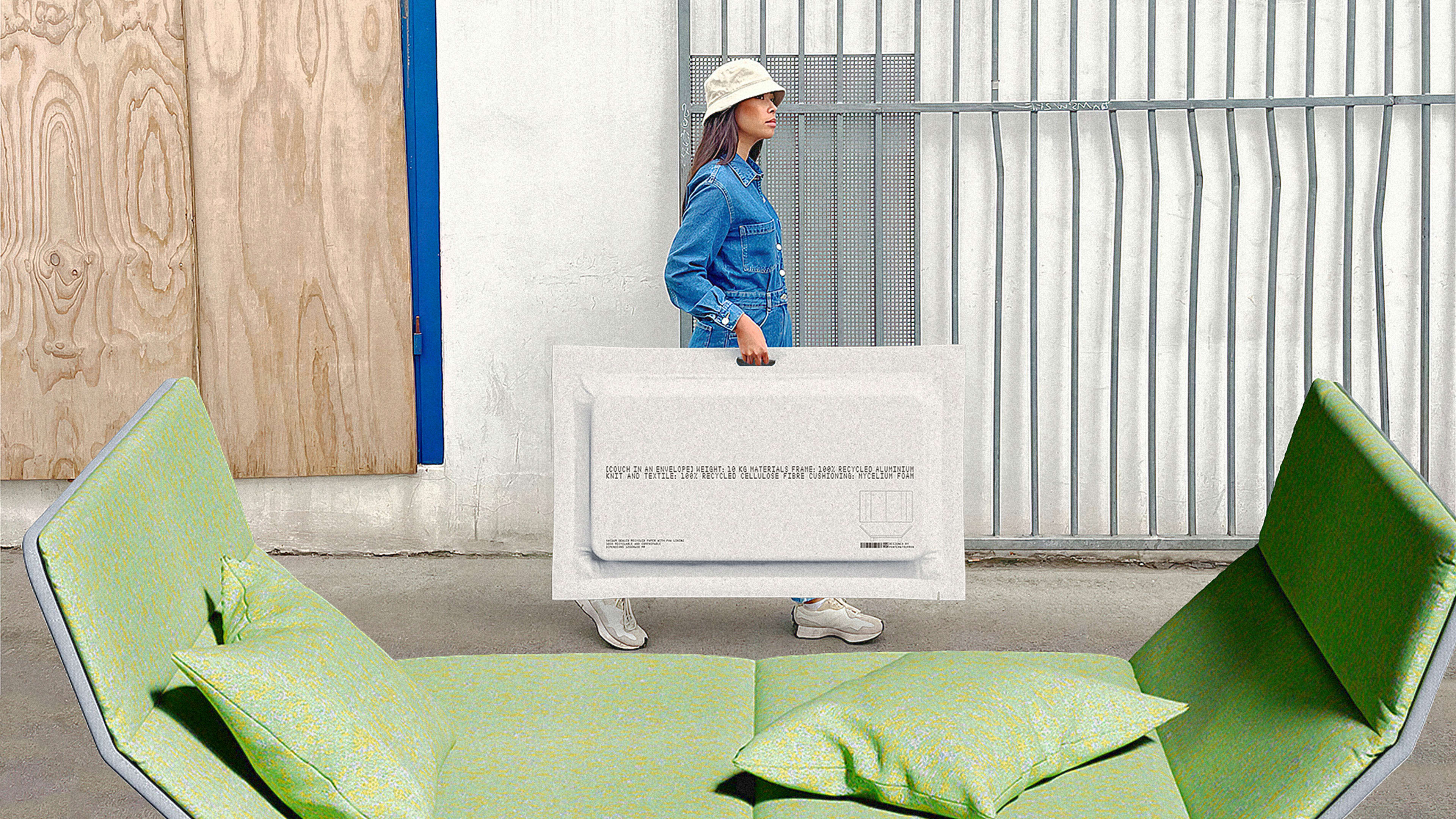The couch is the most comfortable seat in most homes, but it’s also the most uncomfortable seat to get into your house. Heavy, bulky, and requiring a team of geometry PhD students to navigate up a staircase, a couch is one of the great annoyances of moving.
A new speculative design project poses a tantalizing question: What if a couch could fold flat, fit into a big envelope, and be carried by a single person?
“It was a provocation,” says Georgina McDonald of Space10, the Copenhagen-based independent research and design lab behind the project. “It seemed maybe not achievable.”
But in collaboration with the Swiss design firm Panter&Tourron and through the use of generative artificial intelligence, a flat-pack couch prototype has just been created. The resulting design is a benchlike modular-couch design, with adjustable wings and thin panels of cushions. Able to be packed flat and stuffed into an oversize envelope-shaped tote bag, the couch weighs just 22 pounds.
The idea for this project dates back to 2019. Space10, which is supported by and dedicated to working on product design for Ikea, was interested in finding new ways for furniture to be manufactured. The project was originally an exploration of the potential for using digital-fabrication tools like 3D-knitting robots to create lightweight and foldable furniture. The pandemic put that project on hold; but about six months ago, Space10 brought the idea back to life, with an additional set of tools at its disposal: easily accessible generative AI.
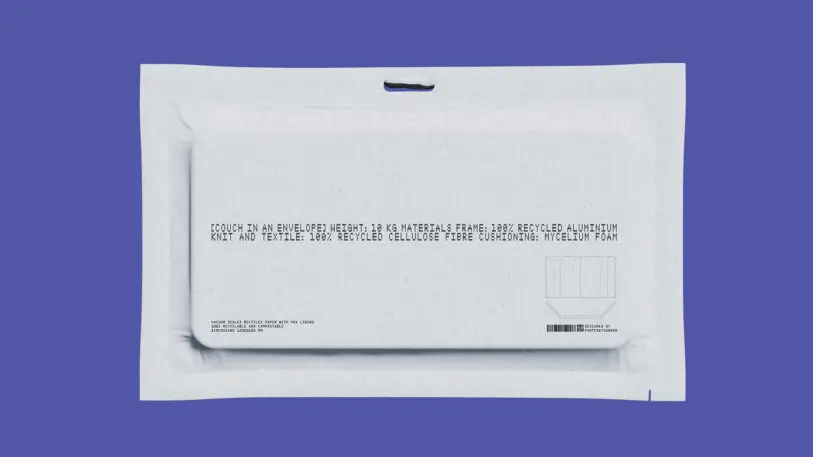
“As part of the original strategy,” says McDonald, “I actually wrote into ChatGPT, ‘could a couch fit into an envelope?’ And of course the answer was ‘no, a couch could not fit in an envelope.’ That really made us excited because, of course, the algorithm is fed on connotations of what is an envelope, what is a couch.”
Space10’s designers worked on hundreds of prompts in text-to-image generative AI tools like Midjourney and DALL-E to push the design toward the flat-pack ideal. “As soon as we removed the word couch and started looking at [terms like] platform, lightweight, tent, hammock, bed, and surface, we started to get closer to what we wanted,” McDonald says.
Through hundreds of iterations, the AI output morphed from an origami diner booth to an interlinked pair of chaise lounges to a pillow-strewn clamshell. McDonald says a key moment in the design phase was the inclusion of the term “conversation pit” in the AI prompt, which led to the benchlike and more social shape of the final design. “Currently, the couch is being placed in front of the TV, like it’s an altar,” says McDonald. “As soon as we started putting in words like ‘conversation pit,’ people started being included in the generative AI and facing each other.”
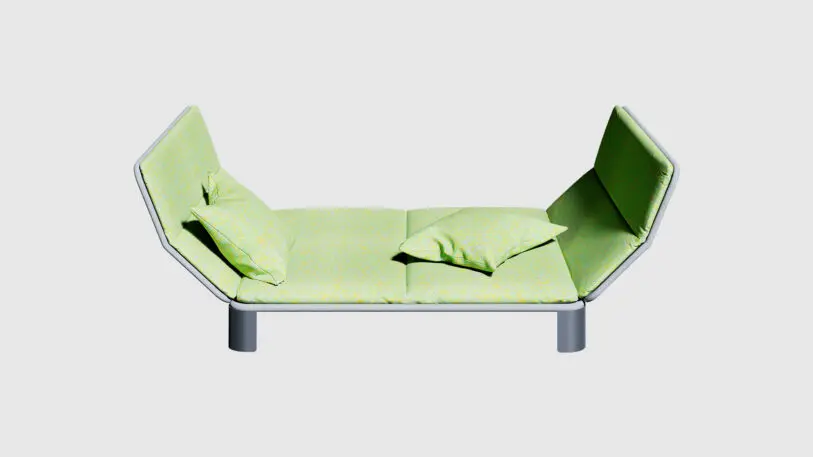
McDonald says the ideas created using generative AI were just starting places for the designers at Space10 and Panter&Tourron, who then developed them into something that could actually be built, support a human, and be comfortable. “ChatGPT, Stable Diffusion, Midjourney, Dall-E can’t tell you whether that feels good on your back and whether that’s a soft enough fabric or whether that’s a good enough joinery or whether that’s going to be safe,” McDonald says. Space10 has been using these tools to develop other speculative designs for potential Ikea products, but the couch is the first to go beyond being just a clever sketch. “We want to use this as a collaborative tool. We took it as far as we could.”
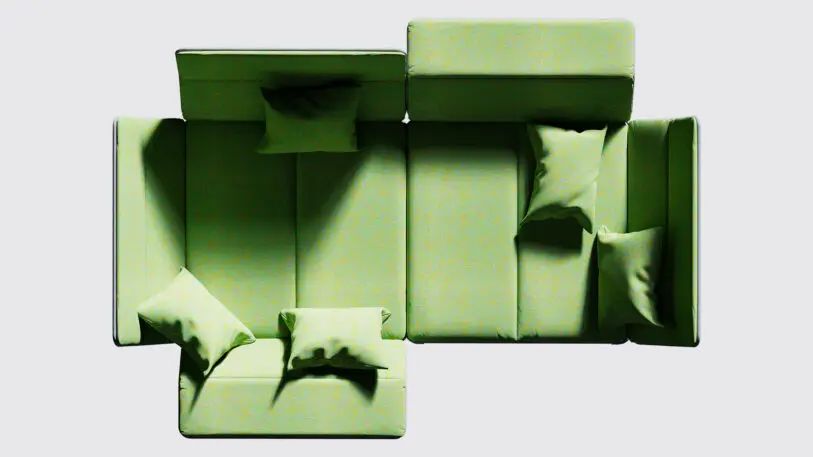
The final design has been turned into a prototype, which is now on display as part of Copenhagen Architecture Festival. Separable into pieces, the couch can be stuffed into a big bag and hauled off to a new location by a single person. McDonald says the couch isn’t likely to be on shelves in Ikea stores any time soon. She’s ready to hear feedback from people about the design—why they’d want one, why they’d never ditch their cushy sofa for a flat-pack—but the real point of the project at this point is to prod designers.
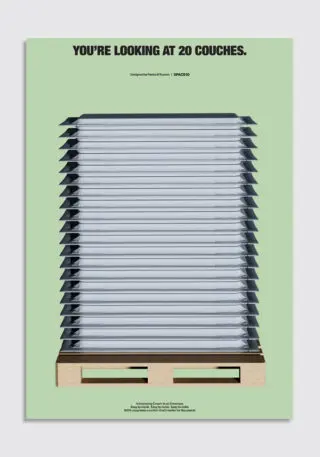
“We have this powerful tool of generative AI; we no longer need to stick to certain archetypes,” she says. “I think the couch was a really good start, but I hope that this method or these conversations are a vehicle to look at additional things.”
The bed, McDonald says, is another obvious target, with its bulky size and moving pains. But she also cautions that this approach to designing objects isn’t about creating new objects but solving the problems inherent to the ones we already have. “We’re not using it to find new aesthetic ways of making more unnecessary stuff that just ends up in storage or a landfill,” she says. For anyone who’s ever moved a couch upstairs, this approach is a welcome addition to the discourse of design.
Recognize your company's culture of innovation by applying to this year's Best Workplaces for Innovators Awards before the extended deadline, April 12.
